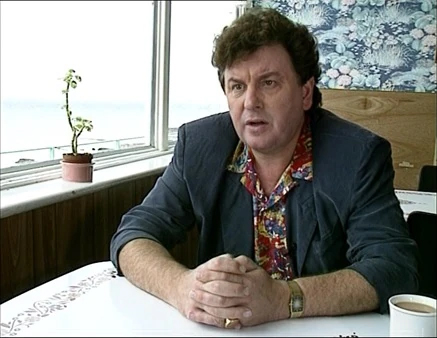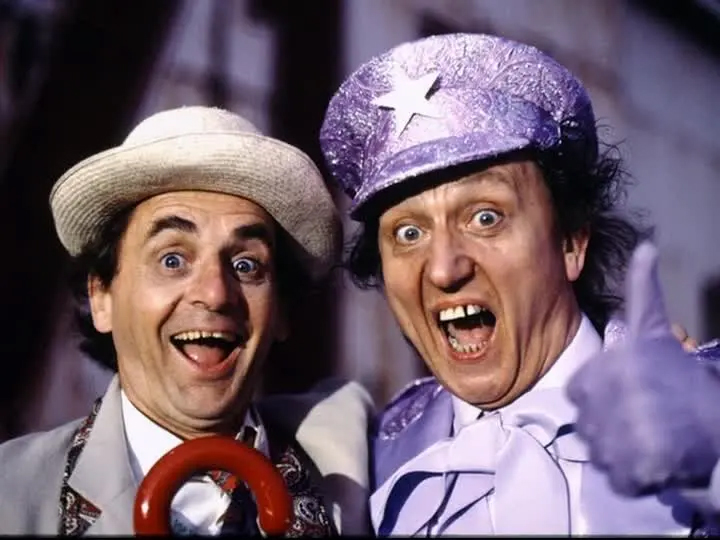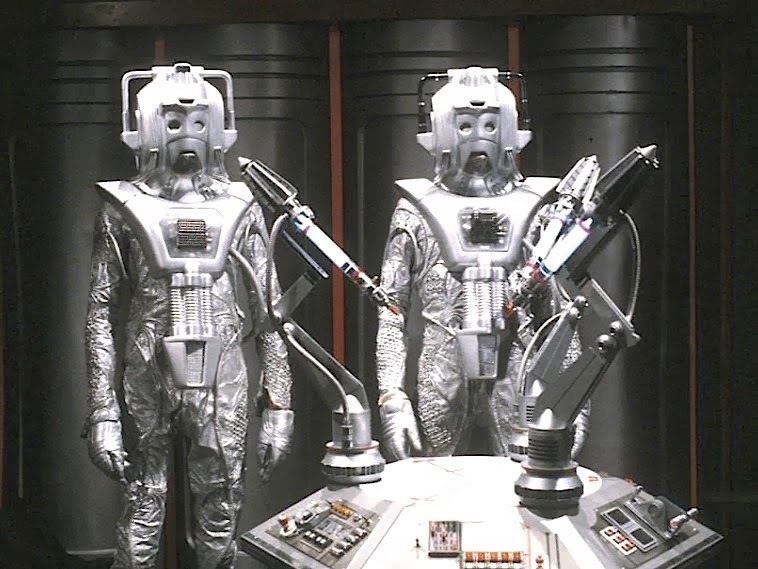John Nathan-Turner produced Doctor Who between 1980 and 1989 and mastered the art of generating publicity for his favourite show.

John Nathan-Turner was, at times, a controversial producer. He was the man who opted to dress the Sixth Doctor in a multi-coloured outfit that was almost universally disliked, and indeed he later admitted that this decision was a misfire. Similarly, he famously stated that the memory cheated when it came to older episodes of Doctor Who, and that some fans were remembering the Classic stories as better than they actually were.
But one has to remember that, when John Nathan-Turner became the producer of Doctor Who, the programme was experiencing something a dip. The production values had dwindled owing to (as Nathan-Turner saw it) an apathy on the part of the production team. Similarly, the show had become more pantomimic due, in part, to the free rein that some of the actors had been given when it came to ad-libbing.
So it was a show that, to some extent, was in need of renewal; the public needed reminding why this programme was worth half an hour of their time on a Saturday evening, and John Nathan-Turner was skilled at using print and TV media to tease and excite the public.
One of the ways he did this was through his casting choices. He knew that by casting high-profile names, he would generate free publicity by way of the popular press, even if what was being printed was not always favourable. But this wasn’t something that John Nathan-Turner was necessarily gratuitous about; for example, he was quick to defend the casting of comedian Ken Dodd in ‘Delta and the Bannermen’ by reminding people that he was also a Shakespearean actor.

Moreover, John Nathan-Turner was keen to cast actors who were well known and popular among the viewing public, even if they were (perhaps) not obvious choices for Doctor Who. Kate O’Mara was one such example, whom many viewers knew from her time in the soap opera Dynasty. Nathan-Turner chose her to portray the renegade Time Lord the Rani, a character that O’Mara quickly made her own and she became almost as iconic as the Master, despite only making two TV appearances.
The casting of the Fifth Doctor Peter Davison was also done with the viewing public in mind. That is not to say that Davison was cast purely for the fact that he was famous from his stint in All Creatures Great and Small, but rather that he was visually distinctive from the statuesque, curly-haired Tom Baker. Moreover, John Nathan-Turner had worked with him before and had seen many ‘Doctor-ish’ qualities which he believed would make Davison right for the role.
And indeed, the public seemed to agree with Nathan-Turner’s judgement. In Peter Davison’s first season the viewing figures doubled, rising from lows of around 3 million to highs of around 10. And this new wave of popularity was sustained, even if it did ultimately ‘find its level’; the show was still pulling in averages of 7 to 8 million by the time Colin Baker was cast as the Doctor.
It was during this time, however, that the show fell out of favour with the BBC and plans were put in place to axe it. But John Nathan-Turner managed to use this situation to his advantage and leaked the news to the popular press before it was public knowledge. The story that emerged was that Doctor Who had been cancelled as part of a BBC plot to get more money out of the government, although nobody quite knows who the source of this false story was.
Whatever the truth of the matter, the wave of publicity surrounding Doctor Who’s supposed cancellation worked. Indeed, at one point fans were threatening to picket the Houses of Parliament with Daleks, at which point the BBC decided to give the programme a stay of execution and only suspended Doctor Who for 18 months, acknowledging that there was sufficient public desire for another series.
It was during this time that one of John Nathan-Turner’s more controversial publicity decisions came to the fore. Inspired by Bob Geldof’s Live Aid charity record, Nathan-Turner had the idea of devising a song to save Doctor Who, performed by a number of popular musicians from the time – and indeed, Doctor Who stars Colin Baker, Nicola Bryant, Nicholas Courtney and Anthony Ainley.
He was aided in his plan by long-time Doctor Who fan and record producer Ian Levine who helped make the single a reality, with (now famous) film composer Hans Zimmer writing the music. Alas, ‘Doctor in Distress’ was not a commercial success, and has become something of a thorn in the side of all those who were involved. But it was certainly a unique and innovative idea, even if it didn’t quite have the impact that John Nathan-Turner had hoped for.
But a key thing to remember is that Nathan-Turner was always tactful when it came to promoting his programme. In fact, sometimes this meant shunning certain opportunities for publicity; on one occasion, he rejected the idea of having a Cyberman on the front cover of the Radio Times in order to preserve the surprise of the returning baddies in ‘Earthshock.’ And he acted similarly when other popular characters such as the Master were returning to the series, crediting the actors under pseudonyms in the magazine listings.

Conversely, John Nathan-Turner knew that other returning baddies such as the Daleks would always lead to a rise in ratings owing to their enduring popularity, and all of the stories that were transmitted during his tenure featured them in the title, such as ‘Revelation of the Daleks’ and ‘Remembrance of the Daleks.’ It should be noted, though, that Nathan-Turner was the producer for some four years before he ever oversaw a Dalek story.
What do you think is the most memorable piece of publicity that John Nathan-Turner came up with? Let us know in the comments below.









He was a master of promotion, and he definitely took Tom Baker’s comment that the next Doctor could be a woman and ran with it.
I would point out though that initially his take on the show wasn’t a big hit with the viewing public. The show went from 8 million viewers after the ITV strike in season 17 to the lows described above in season 18, despite the same popular actor leading it. The timeslot was more competitive, but it could be argued that JNT’s changes alienated some people at first and only the publicity of a soft reboot with a new Doctor and a twice weekly new timeslot made things go over better.
He didn’t though. The public disowned the show the moment JNT took over. It was a disaster apart the odd one or two good ones which relied on nostalgia to pull it through.